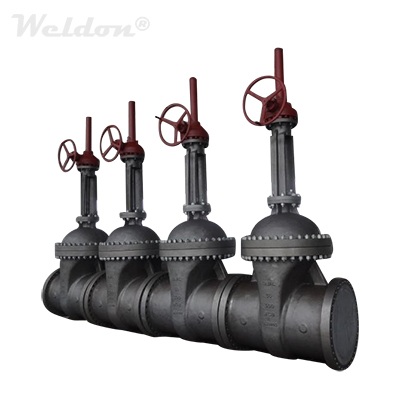Cast steel gate valve, also called "API cast steel gate valve", is suitable for ANSI Class 150 - 2500 LBs, working temperature < 600 °C under various working conditions of petroleum, chemical, thermal power plants such as pipelines, cutting or connecting pipeline media. Applicable medium: water, oil, steam, etc. Operation: manual, gear transmission, electric, pneumatic, etc.
Cast Steel Gate Valve Design Features:
In general, the common valve is prone to leakage or rust after long-term use. We use the new material of rubber and elastic seat sealing technology in the cast steel gate valve manufacturing process to overcome the defects of general gate sealing, rust, etc. The seat adopts an elastic disc to generate an elastic deformation compensation effect to achieve a good sealing effect, so the valve switch is light, the seal is reliable, and the service life is long. Which can be widely used in tap water, sewage, construction, petroleum, chemical industry, food, medicine, textile, electric power, marine, metallurgy, energy systems and other pipelines as a closed device.
The Advantages of Cast Steel Gate Valve:
1. Low fluid resistance.
2. Easy open and close.
3. The flow direction of the medium is not limited, not disturb the flow, not reduce the pressure.
4. Simple shape, short structure length, good manufacturing process and wide application range.
The Disadvantages of Cast Steel Gate Valve:
1. The sealing surface is easy to cause erosion and wear, and maintenance is difficult.
2. The external dimensions are large, so some space is needed to open and close.
3. The structure is complicated.
The type of gate width can be divided into wedge gate valve and horizontal gate valve according to the sealing surface configuration. The wedge gate valve can be divided into single gate type, double gate type and flexible gate type; parallel gate valve can be divided into single gate valve and Double gate valve type. According to the position of the stem thread, it can be divided into rising stem gate valve and non-rising stem gate valve.
